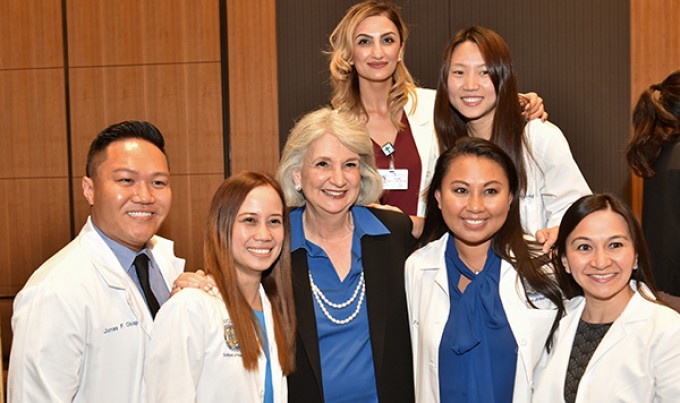CNO Roundtable 2020
Exciting Innovations
Q: What is a new or upcoming practice change or technological innovation that you are especially excited about?

Linda Sarna, RN, Ph.D., FAAN
(above, with APRN students at their white coat ceremony)
Dean / Professor / Lulu Wolf Hassenplug Chair
UCLA School of Nursing
With California facing an urgent and growing shortage of mental health professionals, three schools of nursing within the University of California system — UCSF, UC Davis and UCLA —are launching a new online certificate program that will prepare 300 additional psychiatric mental health nurse practitioners by 2025. The need for more mental health providers in California is critical. Solutions that include online education along with traditional on-the-ground support are the wave of the future. This will allow nurses across the state to expand their education without requiring relocation.
Katie Hughes, RN, MSN, CRRN
Chief Nursing Officer
Casa Colina Hospital and Centers for Healthcare
One of the most exciting innovations I have seen recently is a wound assessment app that can be loaded onto a nurse’s call phone and interfaces with most EMR systems. There are many challenges to good-quality wound assessment and documentation, including variations in wound measurement, the nurse’s knowledge and assessment skill and the difficulty of uploading images. This app takes detailed 3-D images of the wound; calculates its size, depth and volume; identifies basic wound bed tissue type; and uploads the information directly into the patient’s record. Using the app increases the accuracy of assessment and documentation while reducing the time nurses spend doing it.




